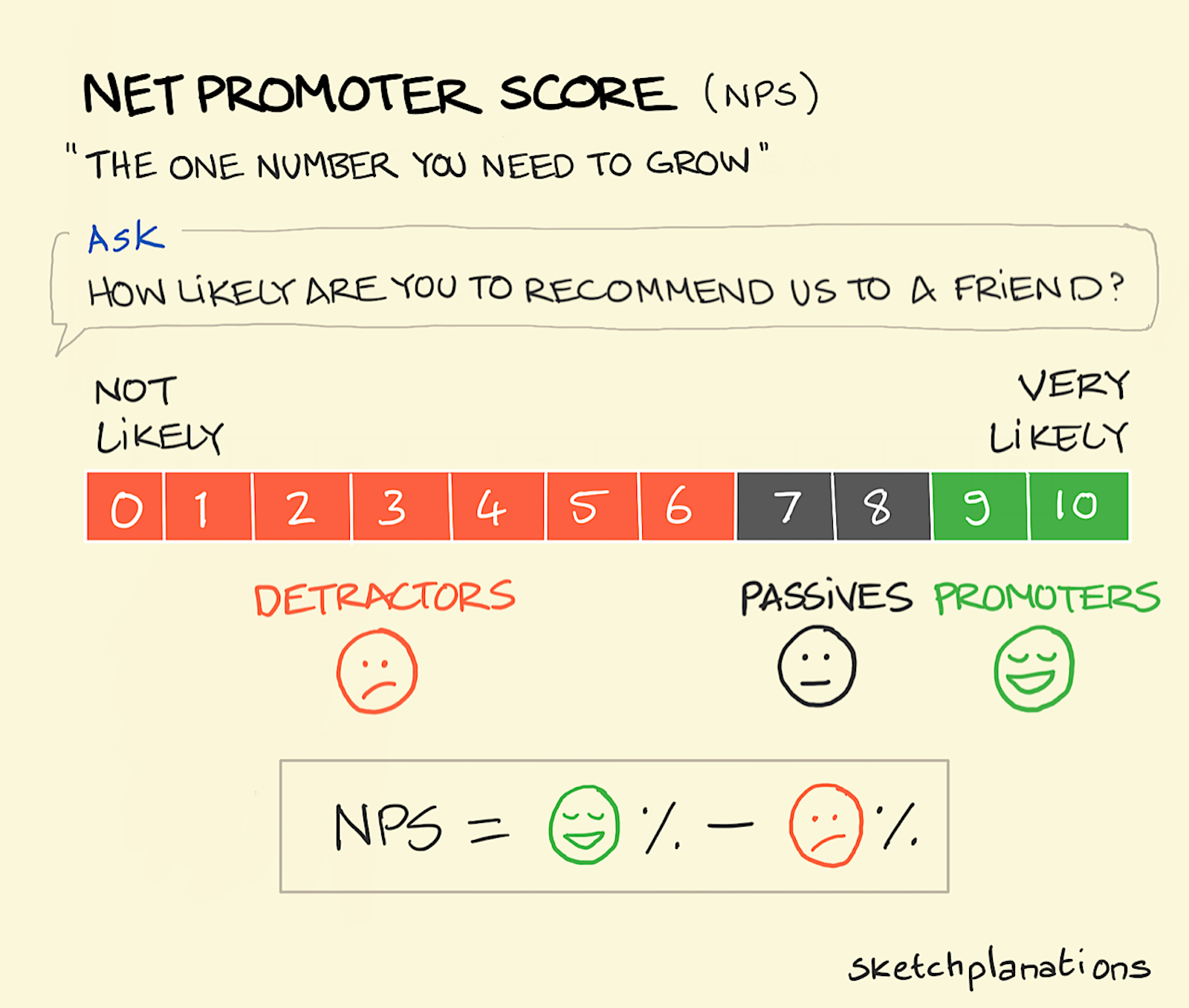
Net Promoter Score
Pitched as the one number you need to grow your business, the Net Promoter Score (NPS) is a way to find out from your customers how many love what you’re doing enough to tell their friends vs how many are ambivalent or negative about your business. The resulting number, your NPS, ranging from +100 to -100 has been shown to be an indicator of companies’ future success.
To calculate your NPS ask your customers how likely they would be to recommend your business to a friend—or variations thereof—and give them a scale of 0 (not likely) to 10 (very likely) to answer with. Those who answer 9 or 10 are your biggest fans or Promoters. Those who answer 7 or 8 are passively satisfied—they like your business but are unlikely to shout about it. And those answering 6 or below are your Detractors. If they talk about your business it could well be negative. Your NPS is your % of Promoters minus the % of your Detractors. For example, if you received 100 responses, 35 as 9s or 10s, 37 as 7s and 8s, and 28 as 0–6s then your NPS would be 35 minus 28 = 7.
Keep track of your NPS over time and you’ll get a sense of how your business is doing. Follow up with qualitative feedback, for instance, “Why did you give this rating?”, and get a recipe for improving your business. Simple.
Learn more in the original Harvard Business Review article, “The One Number You Need to Grow” by Frederick F. Reichheld.




